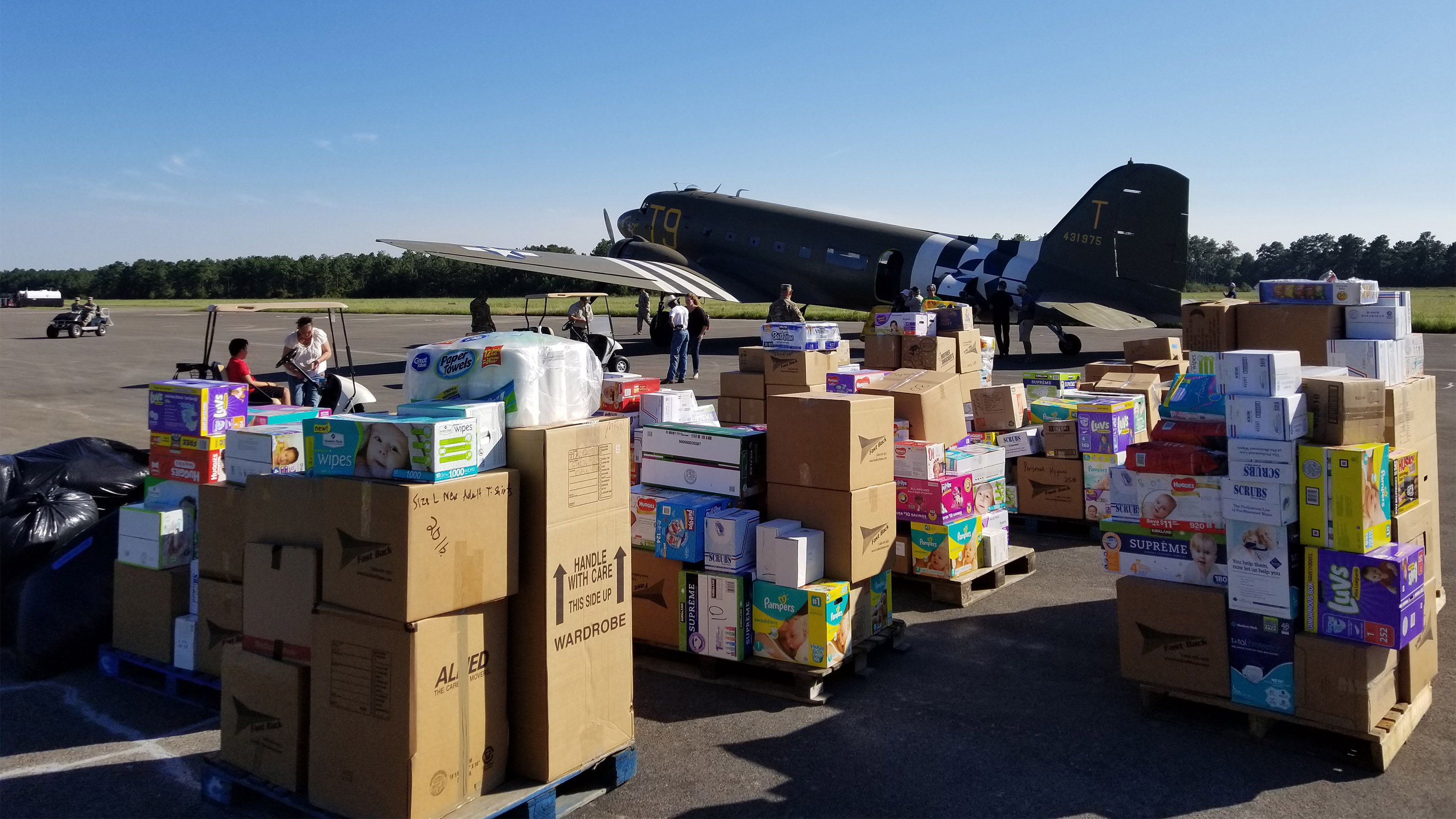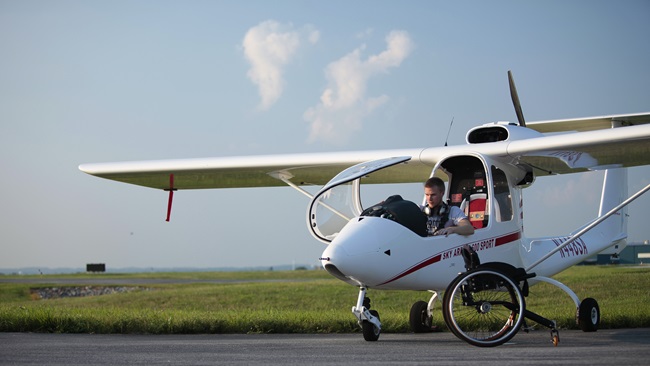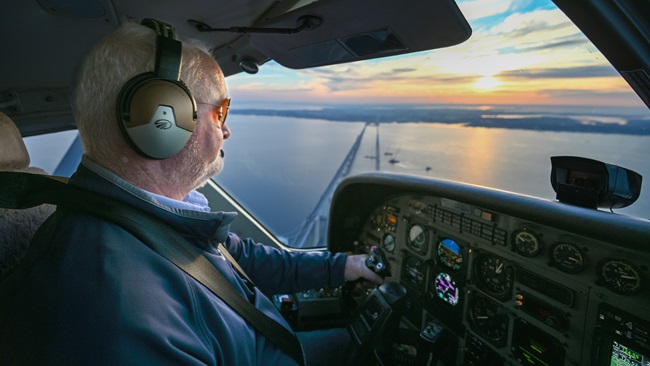Behind the scenes of grassroots success Operation Airdrop
What has become one of the largest overnight grassroots general aviation disaster relief groups—Operation Airdrop—started with a phone conversation Aug. 29 between pilots Doug Jackson and John Clay Wolfe (also a Dallas-Fort Worth radio personality) while Jackson and his friend Chip MacLaughlin drove from Rockport, Texas, back to their homes in Decatur after delivering a trailer full of supplies to the South Texas area that was hit hard by Hurricane Harvey.
Hurricane Harvey made U.S. landfall near Rockport the evening of Aug. 25 with peak winds of 130 mph and an atmospheric pressure of 27.7 inches of mercury. With its meandering and slow path inland and then back to sea, the hurricane took its toll on South Texas and Louisiana before dissipating as it headed north.
Wolfe then turned to logistics: His company buys cars from all over the country and uses drivers to transport them to staging locations before bringing them to a central location in the Dallas-Fort Worth area. Why not run his company’s model in reverse? Instead of bringing everything to the Dallas area from across the country, send out supplies from the city. Use pilots instead of drivers to move disaster relief supplies instead of cars. And use airports as staging areas. The idea worked.
The network of connections quickly expanded as volunteers jumped in to help. Glenn Smith started making calls to find airports to accept deliveries. After being contacted by the group, Robert Johnson prepared his airplane for a mission the next day, Aug. 30. Because of numerous temporary flight restrictions in the Houston area, Johnson enlisted the help of Brian Kelly, an FAA air traffic controller and former U.S. Air Force HC-130 navigator who flew refueling missions for search-and-rescue helicopters in New Orleans after Hurricane Katrina.
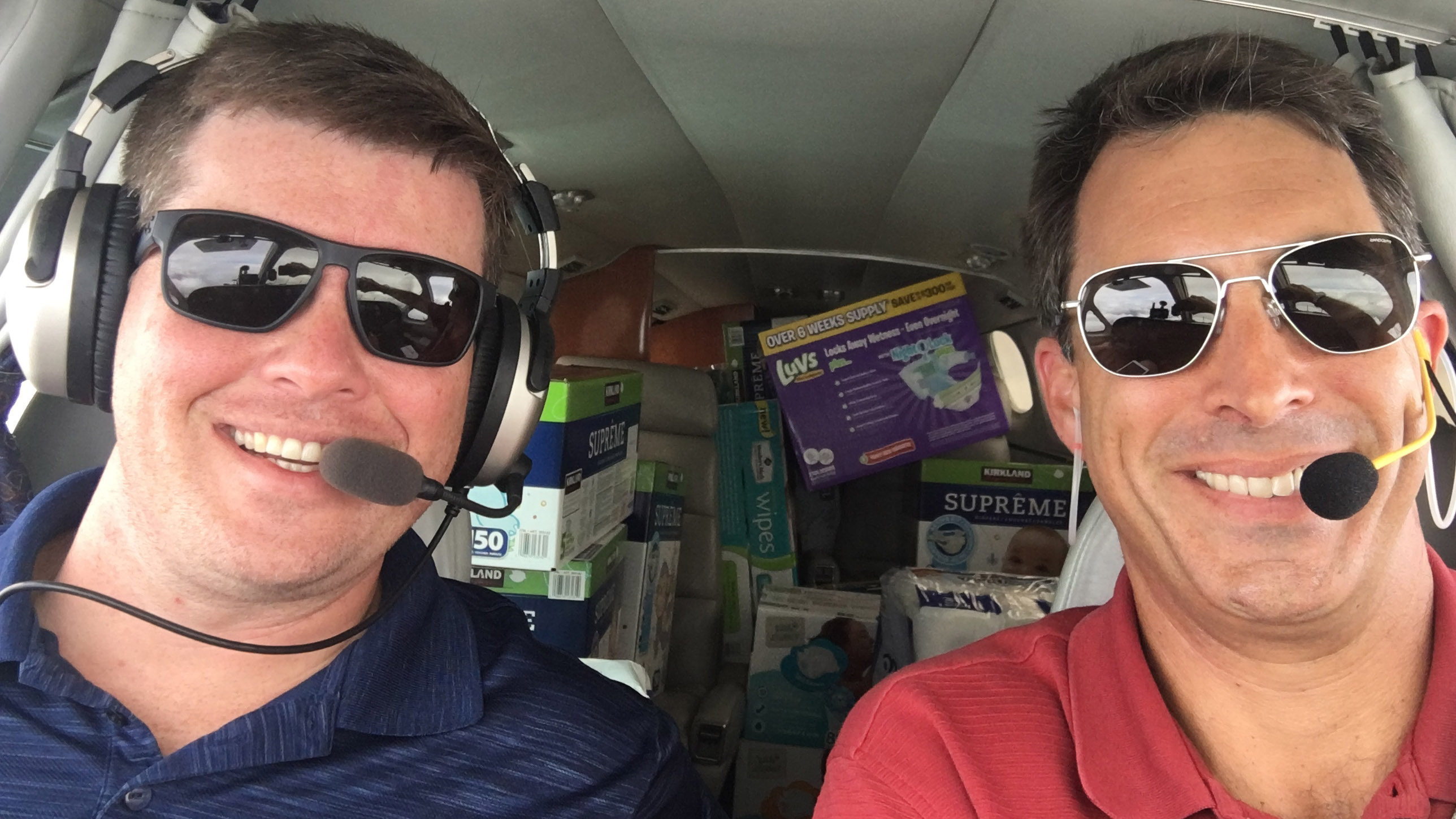
Johnson was initially instructed to prepare to fly caseloads of cash to the Salvation Army, which was needed to purchase items in the affected areas because of power outages, closed banks, and downed credit card networks. However, the Salvation Army received the needed cash through another means and asked Johnson to deliver relief items including sleeping bags, baby formula, diapers, and toiletries. Johnson sent a few of his employees shopping with instructions to buy enough to fill his Cessna 421. Once the airplane was loaded, he and Kelly flew the first Operation Airdrop supply mission on Aug. 30 to the Salvation Army in Conroe.
After the flight, Kelly began managing TFR information and flight procedures for the group to make missions easier for pilots because the restrictions were constantly changing. He also collected tail number information from those who had registered through the Operation Airdrop Facebook page or website, and coordinated discrete transponder codes with the Texas Air Operations Center to allow pilots to fly through the TFRs for the missions.
In the meantime, fixed-base operators volunteered space and resources to become “drop zones” for supplies that were to be delivered south. Smith had worked with the Salvation Army and Galaxy FBO to arrange a mass delivery of supplies to Conroe for Sept. 1. The response—and resulting mission—was incredible: More than 60 airplanes laden with supplies arrived at the airport from all over Texas and beyond, including Arizona, Colorado, and North Carolina.

Presidential TFRs over Houston and Lake Charles, Louisiana, created a challenge for missions Sept. 2. Kelly identified airports on the sectional chart that were outside the TFRs and started cold-calling airports. He connected with Hawthorne Field Airport in Hardin County, Texas, about halfway between Houston and Lake Charles.
Airport officials at Hawthorne Field truly understand the airport’s value to the community it serves. In short order, they set up a trailer, pallets, moving wrap, and forklift to move supplies from airplanes and into the hands of the people who needed them. Operation Airdrop steered its pilots to the airport through an announcement on its Facebook page, and over the course of the week, more than 140 flights went to Hardin County alone.
A mass delivery of supplies went to Beaumont Sept. 3, where local attorney Jolei Shipley set up a ground network that included members of the Texas National Guard and volunteers from American Airlines that would make any NASCAR pit crew proud (the fastest airplane unload time was 20 seconds, with the average unload time at 7 minutes). Supplies were sorted and left the airport within 40 minutes of arrival. Those supplies made it to the hurricane survivors within four hours of being offloaded. This was a great example of immediate needs being met immediately.
Through networking and Facebook, donations of supplies flowed in, pilots arrived to transport them, and ground teams formed to receive and distribute them. But the key to making these missions work was the operations center. Jackson noted, “I had no idea. Between phone calls and Facebook posts, we were getting things done those first few days. The next thing I know, there is a command center set up in Denton. They were amazing and just set it up on their own.”
Alex Clark, a cargo pilot based at Denton, and his pilot friend Ethan Garrity, along with Brian Kelly and IT guru Neal Clayton, began contacting airports, supply locations, and pilots to get items transported smoothly and safely. Clayton was instrumental in setting up key communication pieces through the website, and the team worked with FlightAware to gain access to the raw data to enable faster tracking of mission flight plans and flights. Allie Hoyt, a private pilot, A&P, and airline flight attendant, returned from a trip on Sept. 6 and drove straight from Dallas-Fort Worth’s airport to the Denton airport, where she triaged the 80-plus emails that had come in over a matter of hours that day. She and the team were in the center from 12 to 17 hours a day, with some sleeping over for a few nights. Between texts, phone calls, emails, Facebook posts, and Messenger, everyone had something to do all day.
“I usually only do about 200 texts a month. In less than two weeks I had over 4,000 texts and 1,800 minutes of phone calls. It was incredible,” Kelly said.
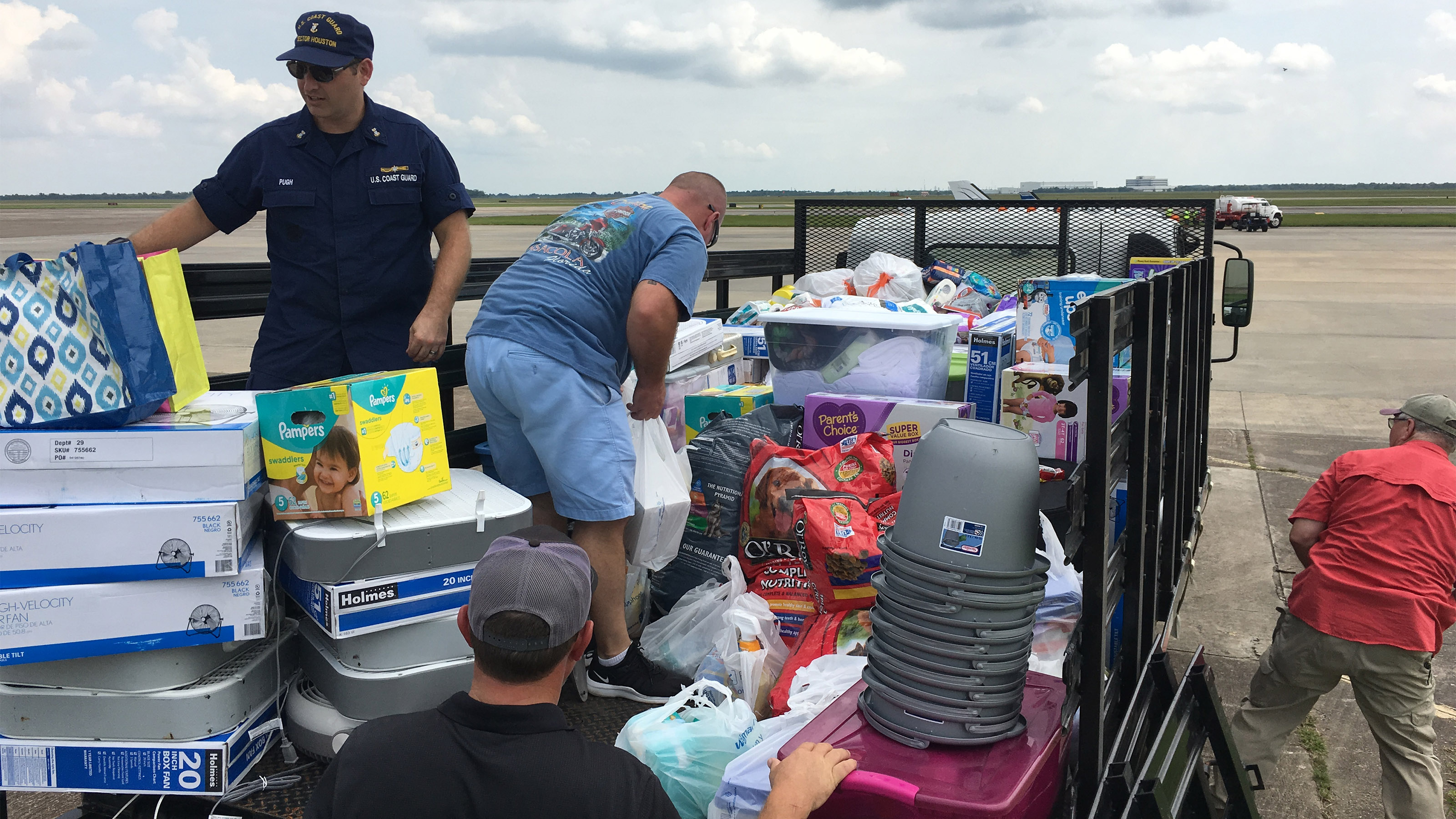
Each day a primary delivery airport was designated and the team assigned individual pilots to special missions for unique, short-notice delivery. Johnson flew one of those missions. After loading his Cessna 421 with supplies, the call came in that liquid infant formula and refrigerators were urgently needed in Harpin County. Johnson’s airplane was unloaded, and in short order four small refrigerators arrived along with insulin injectors, infant formula, and infant-sized feeding tubes. It all fit. En route to Hawthorne Field Airport, he looked back at this load to take it all in, later commenting, “That’s when it really hit me how big a difference we were making, especially with the baby formula on board.”
Operation Airdrop worked with two exceptional organizations that collected thousands of pounds of supplies for delivery. The Patient AirLift Services Sky Hope Network worked out of Georgetown Municipal Airport and had a hangar full of pre-sorted supplies that made it look like a mini Costco. Just for the Labor Day missions, up to a dozen empty airplanes were arriving on the ramp at the same time. Pilots filled out a slip listing their tail number, destination, and load capacity, and gave it to one of the ground handlers. Knowing the needs of each destination airport, volunteers prepared a pallet for each airplane, moved it by forklift directly to the airplane, and helped the pilot load the supplies.
At Skylark Field Airport in Killeen, Texas, a local volunteer group named the Educated Angels was equally impressive. With supplies set up in the old fire station, airplanes would taxi in front and give their load capacity. Items were pre-bundled and weighed before being loaded in aircraft based on the destination. A designated volunteer kept track of the total weight while two to three others helped load. In just six days, this group loaded 62 Operation Airdrop airplanes with more than 27,000 pounds of supplies.
Although a few missions would continue, official Operation Airdrop missions ended Sept. 9. From Cessna 150s to Phenom 100 business jets, more than 200 aircraft participated in moving over 225,000 pounds of supplies to South Texas. This was such a phenomenal success that the operations center team assisted with the start up of Operation Airdrop Florida for Hurricane Irma relief efforts.
General aviation, including the hundreds of community airports, is an untapped, strategic national resource that shined in a true time of need.
